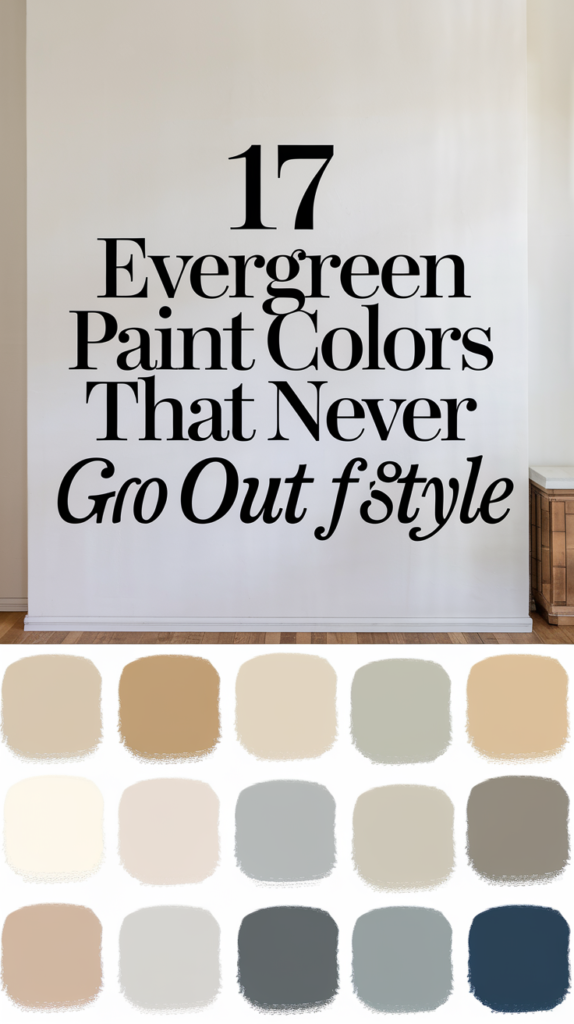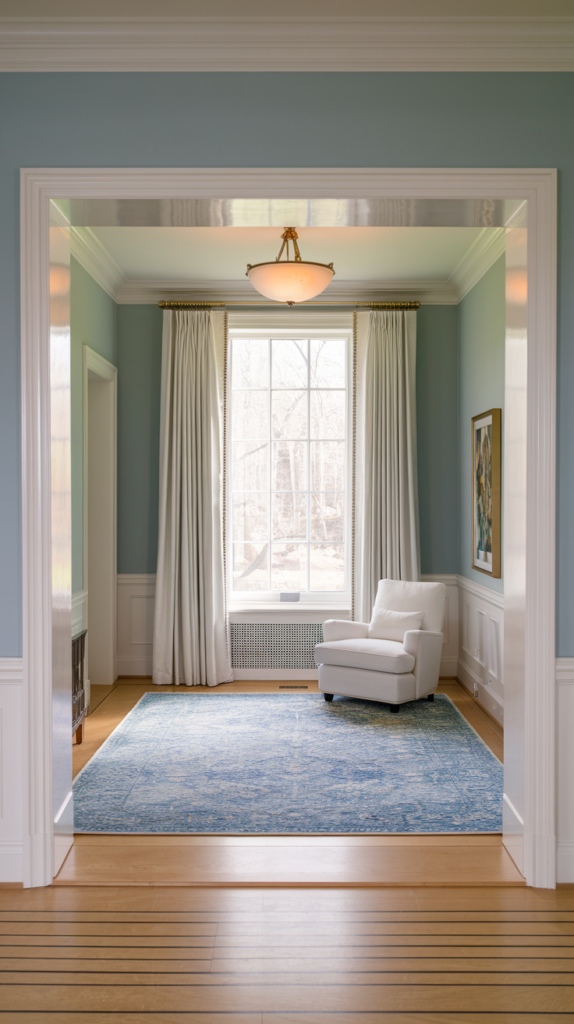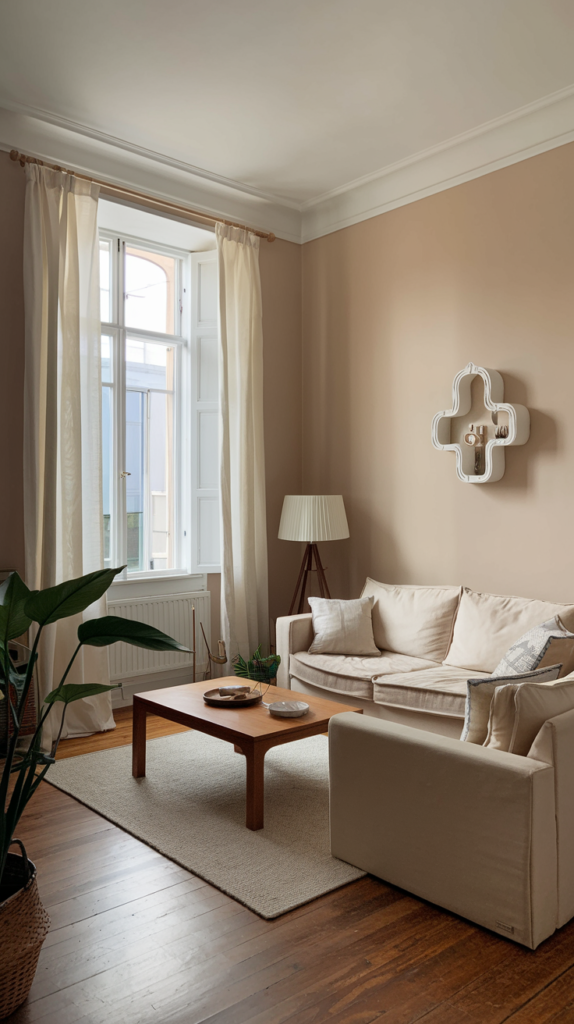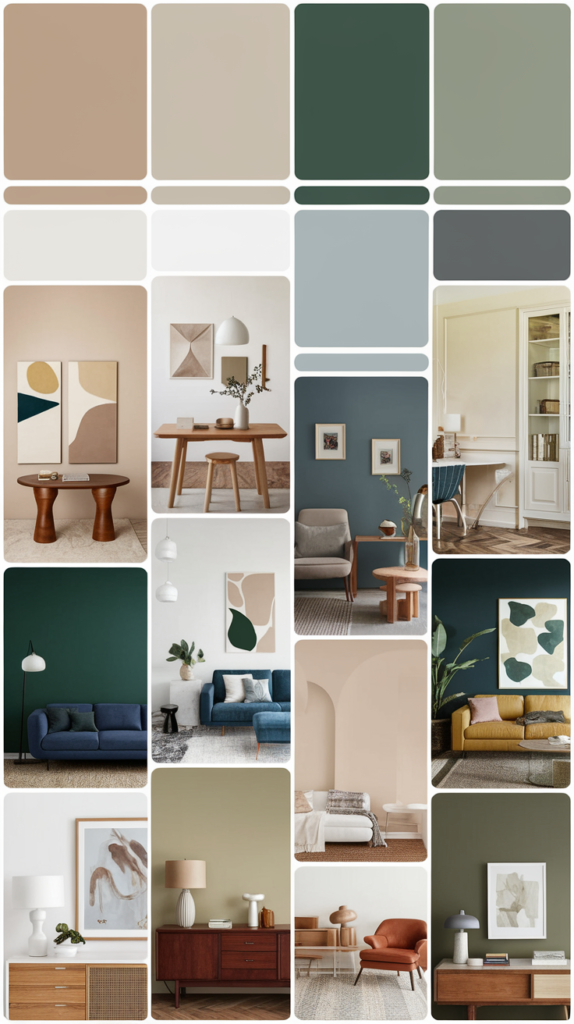17 Evergreen Paint Colors That Never Go Out of Style
Choosing evergreen paint colors for your home can create a timeless aesthetic that blends well with various styles and decor. These colors remain relevant across trends and seasons, providing a fresh yet classic look. Below, we explore 17 evergreen paint colors that never go out of style, along with tips on how to use them effectively in different rooms.
1. Evergreen Fog by Sherwin Williams
One of the most popular evergreen paint colors is Evergreen Fog from Sherwin Williams. This soft, muted green boasts gray undertones, making it versatile enough for any space.
Best Uses:
- Kitchen: Pairs beautifully with white cabinetry and natural wood accents.
- Living Room: Creates a serene backdrop for your furnishings.
Coordinating Colors:
| Color Name | Undertone |
|---|---|
| Alabaster | Warm White |
| Silver Mist | Cool Gray |
| Naval | Dark Blue |
2. Black Evergreen by Behr
Black Evergreen from Behr is a deep, dramatic color that adds depth and sophistication to any space. It’s perfect for accent walls or exterior applications.
Best Uses:
- Bathroom: Use it on cabinetry for a striking contrast.
- Exterior: Great for doors or window frames.
Coordinating Colors:
| Color Name | Undertone |
|---|---|
| Soft White | Warm White |
| Charcoal | Cool Gray |
| Sea Salt | Soft Blue |
3. Sage Green
Sage Green is a timeless choice that brings a natural, earthy vibe. Its soft hue works well in both traditional and modern settings.
Best Uses:
- Bedroom: Promotes relaxation and peace.
- Dining Room: Pairs nicely with wooden dining sets.
Coordinating Colors:
| Color Name | Undertone |
|---|---|
| Creamy White | Warm White |
| Clay Beige | Earthy Neutral |
| Dusty Blue | Soft Cool |
4. Soft Fern
Soft Fern is a gentle green that evokes a sense of tranquility. It’s particularly suitable for spaces where you want to create a calming atmosphere.
Best Uses:
- Home Office: Encourages focus and creativity.
- Entryway: Welcomes guests with a soft touch.
Coordinating Colors:
| Color Name | Undertone |
|---|---|
| White Dove | Warm White |
| Misty Blue | Cool Blue |
| Stone Beige | Neutral |
5. Seafoam Green
This refreshing shade captures the essence of coastal living. Seafoam Green is perfect for beach-inspired interiors.
Best Uses:
- Bathroom: Complements white fixtures beautifully.
- Living Room: Pairs well with nautical decor.
Coordinating Colors:
| Color Name | Undertone |
|---|---|
| Soft Gray | Cool Gray |
| Coral | Warm Pink |
| Driftwood | Light Neutral |
6. Pale Olive
Pale Olive is a muted, sophisticated green that provides a subtle earthiness. It works well in a variety of lighting conditions.
Best Uses:
- Kitchen: Complements vintage-style cabinetry.
- Dining Room: Sets a warm and inviting mood.
Coordinating Colors:
| Color Name | Undertone |
|---|---|
| Off-White | Warm White |
| Charcoal Gray | Cool Gray |
| Warm Taupe | Earthy Neutral |
7. Forest Green
For those seeking a bold statement, Forest Green is an excellent choice. This deep, rich green adds elegance and drama to interiors.
Best Uses:
- Living Room: Works well with plush fabrics and dark woods.
- Bedroom: Creates a cozy, intimate feel.
Coordinating Colors:
| Color Name | Undertone |
|---|---|
| Light Gray | Cool Gray |
| Creamy Beige | Warm Neutral |
| Golden Yellow | Warm Accent |
8. Soft Blue
Soft Blue is an all-time favorite that conveys calm and peace. Its versatility allows it to fit seamlessly into various design schemes.
Best Uses:
- Nursery: Perfect for a serene and safe environment.
- Bathroom: Evokes a spa-like feeling.
Coordinating Colors:
| Color Name | Undertone |
|---|---|
| White Sand | Warm White |
| Light Gray | Cool Gray |
| Blush Pink | Soft Warm |
9. Warm Gray
Warm Gray serves as a perfect neutral backdrop, allowing other colors and decor to shine. Its warmth makes it suitable for various applications.
Best Uses:
- Living Room: Pairs well with both vibrant and subdued color palettes.
- Office: Promotes focus while remaining neutral.
Coordinating Colors:
| Color Name | Undertone |
|---|---|
| Soft White | Warm White |
| Dusty Pink | Soft Warm |
| Charcoal | Dark Cool |
10. Dusty Blue
This muted blue is a classic choice for creating a vintage feel. Dusty Blue pairs well with rustic and shabby chic decor.
Best Uses:
- Bedroom: Invokes a restful atmosphere.
- Dining Room: Complements wood tones beautifully.
Coordinating Colors:
| Color Name | Undertone |
|---|---|
| Soft White | Warm White |
| Pale Lavender | Soft Cool |
| Sandy Beige | Earthy Neutral |
11. Charcoal
Charcoal is a sophisticated dark gray that provides a modern edge to any space. Its depth can anchor a room beautifully.
Best Uses:
- Accent Wall: Adds drama without overwhelming the space.
- Kitchen: Pairs well with bright whites and metals.
Coordinating Colors:
| Color Name | Undertone |
|---|---|
| Bright White | Cool White |
| Soft Yellow | Warm Accent |
| Sage Green | Soft Earthy |
12. Warm Beige
Warm Beige offers a cozy, inviting feel that suits various home styles, from traditional to contemporary.
Best Uses:
- Living Room: Provides a warm canvas for art and furnishings.
- Entryway: Welcomes guests with a neutral base.
Coordinating Colors:
| Color Name | Undertone |
|---|---|
| Creamy White | Warm White |
| Olive Green | Soft Earthy |
| Dusty Rose | Soft Warm |
13. Terracotta
For those looking to add a touch of warmth, Terracotta brings earthy richness to interiors. Its reddish-brown tones work well in rustic settings.
Best Uses:
- Kitchen: Pairs beautifully with terracotta tiles or pottery.
- Bathroom: Adds warmth to cooler color schemes.
Coordinating Colors:
| Color Name | Undertone |
|---|---|
| Soft Ivory | Warm White |
| Sage Green | Soft Earthy |
| Creamy Yellow | Warm Accent |
14. Creamy White
Creamy White is a soft, warm alternative to stark white. It adds a touch of elegance and comfort to any room.
Best Uses:
- Whole House: Provides a cohesive look throughout.
- Bathroom: Enhances brightness without being harsh.
Coordinating Colors:
| Color Name | Undertone |
|---|---|
| Soft Beige | Warm Neutral |
| Light Gray | Cool Gray |
| Dusty Pink | Soft Warm |
15. Light Taupe
Light Taupe is a sophisticated neutral that combines the warmth of beige with a hint of gray. It suits a variety of styles.
Best Uses:
- Living Room: Creates a cozy atmosphere while allowing other colors to pop.
- Bedroom: Soft and inviting for restful nights.
Coordinating Colors:
| Color Name | Undertone |
|---|---|
| Off-White | Warm White |
| Soft Blue | Cool Blue |
| Dusty Green | Soft Earthy |
16. Blush Pink
Blush Pink is a soft, romantic color that adds a touch of warmth without overwhelming a space. It pairs beautifully with neutral tones.
Best Uses:
- Bedroom: Creates a serene, dreamy environment.
- Bathroom: Pairs well with white fixtures for a fresh look.
Coordinating Colors:
| Color Name | Undertone |
|---|---|
| Warm White | Warm White |
| Light Gray | Cool Gray |
| Sage Green | Soft Earthy |
17. Pale Yellow
Pale Yellow adds a cheerful brightness to any space. It works well in kitchens and bathrooms, where natural light can enhance its warm tone.
Best Uses:
- Kitchen: Complements wooden cabinetry and brightens the space.
- Living Room: Pairs well with darker furniture for a sunny contrast.
Coordinating Colors:
| Color Name | Undertone |
|---|---|
| Soft White | Warm White |
| Light Gray | Cool Gray |
| Soft Green | Earthy Neutral |



